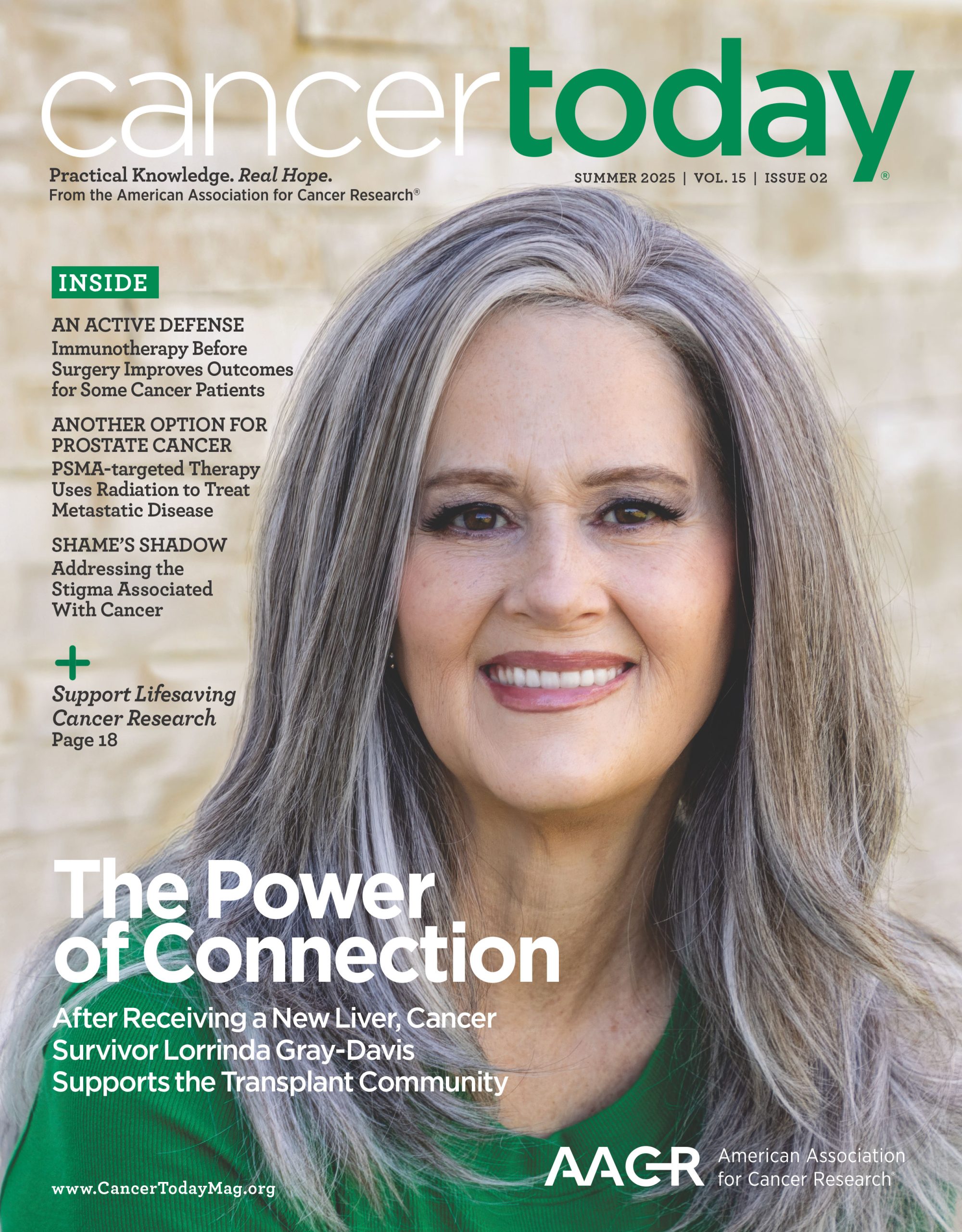Earlier this year, Stand Up To Cancer (SU2C) Canada, a program of EIF Canada that supports innovative, collaborative cancer research, announced it would fund a “Dream Team” of top scientists and physicians to study the role cancer stem cells play in pediatric and adult brain cancers. (The American Association for Cancer Research International-Canada is SU2C Canada’s scientific partner.) Leading the team is Peter Dirks, a neurosurgeon and senior scientist at the Hospital for Sick Children in Toronto.
Nearly every organ and tissue in the human body contains stem cells. These cells have the ability to indefinitely produce many of the specific types of cells that make up the body’s organs and tissues. Studies suggest that many tumors have a small number of cancer stem cells that can continually reproduce and keep the cancer growing. Researchers found the first evidence of cancer stem cells in leukemia in the 1990s. Dirks and his colleagues became the first group to identify cancer stem cells in brain tumors in 2003.
The new Dream Team will be studying adult and pediatric glioblastoma, one of the most aggressive types of brain cancer. An estimated 12,120 adults and children in the U.S. will be diagnosed with glioblastoma in 2016. The team will also study pediatric ependymoma, the third most common brain tumor in children, with about 280 diagnoses each year. Their goal is to identify the genomic and molecular profiles of brain cancer stem cells and then use this information to screen potential new drugs. The team will also launch phase I clinical trials that will test newly discovered drugs that may be effective in treating pediatric ependymoma.
Cancer Today spoke with Dirks about why studying cancer stem cells has the potential to lead to new treatments for glioblastoma and other brain cancers in both children and adults.
Q: What are cancer stem cells?
A: They are populations of specialized cells within a cancer that often make up only a small part of the tumor. These cells are believed to be at the root of the growth of some brain tumors. They also are thought to be the cells least likely to respond to a cancer therapy. We think developing drugs that specifically target cancer stem cells will lead to more effective treatments for brain cancer.
Q: What makes these cells more resistant to therapy?
A: Cancer stem cells may not grow and divide as quickly as their daughter cells. Many cancer therapies work by interfering with cancer cell division. So, a cell that is not dividing will remain following treatment and be able to regrow the tumor. It’s also possible that the makeup of these cells keeps them from responding to chemotherapy.
Q: So these cells stick around like the roots of a weed?
A: That’s a good analogy. You get rid of the visible plant, which is like the bulk of the tumor, and you leave something behind that’s hiding and has the potential to regrow the tumor again.
Q: Why focus on pediatric cancer?
A: The number of brain tumors that occur in children is relatively high, and I think it’s an area that deserves more intense research focus. Also, studying pediatric cancer can provide insights into cancers that develop in adults. Children’s tumors often retain information that allows us to see the types of mutations and pathways that led them to grow. And there’s a lot of interest in testing new therapies on children’s tumors because these tumors have had less time to accumulate various mutations, making them less complex.
Q: What are you trying to learn about cancer stem cells by investigating the unique combinations of genes and chemicals found in these cells?
A: We want to compare the genes, pathways and molecular changes in the cancer stem cells with those found in the other cancer cells that make up the tumor. That will help us understand what is driving the behavior of the cancer stem cells. Our goal is to find a way to change the cancer stem cells so that they then are unable to grow tumors, or to force them into no longer acting like stem cells.
Q: And then they could be killed with conventional therapies?
A: That’s right.
Q: What is unique about this Dream Team?
A: It includes experts in metabolomics, epigenetics, chromatin biology, systems biology and proteomics. They don’t all have experience studying brain cancer. But they have a deep understanding of how cancer stem cells operate. Another unique aspect is that we intend to do this as an open source project. This means our cancer stem cell analyses will be made available as fast as possible to other scientists, which will help accelerate discovery of new treatments for these terrible tumors.
Cancer Today magazine is free to cancer patients, survivors and caregivers who live in the U.S. Subscribe here to receive four issues per year.





